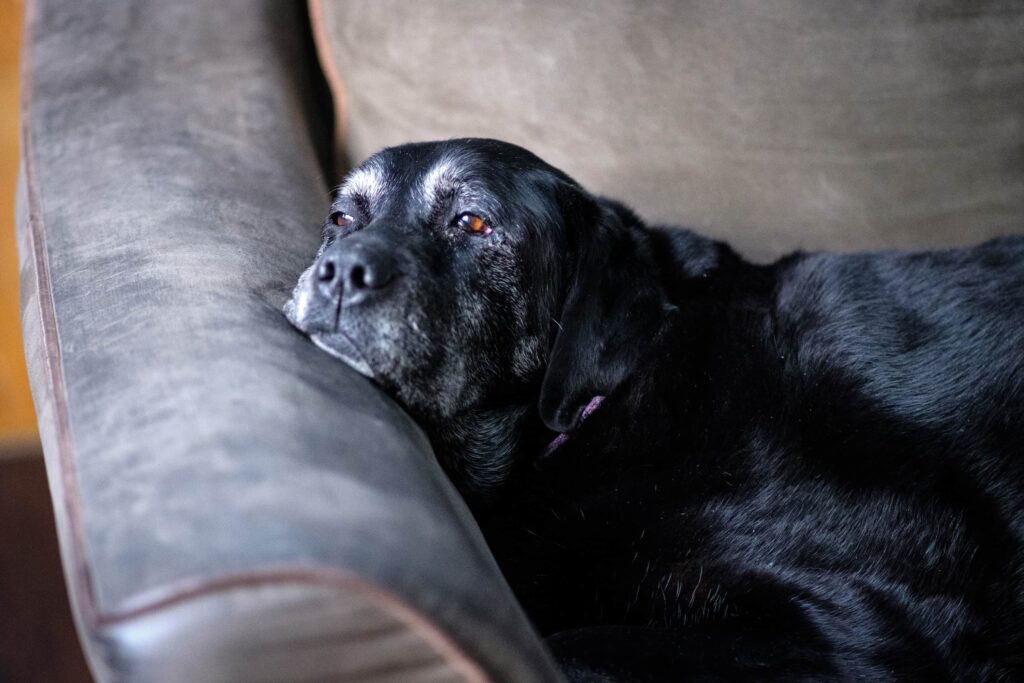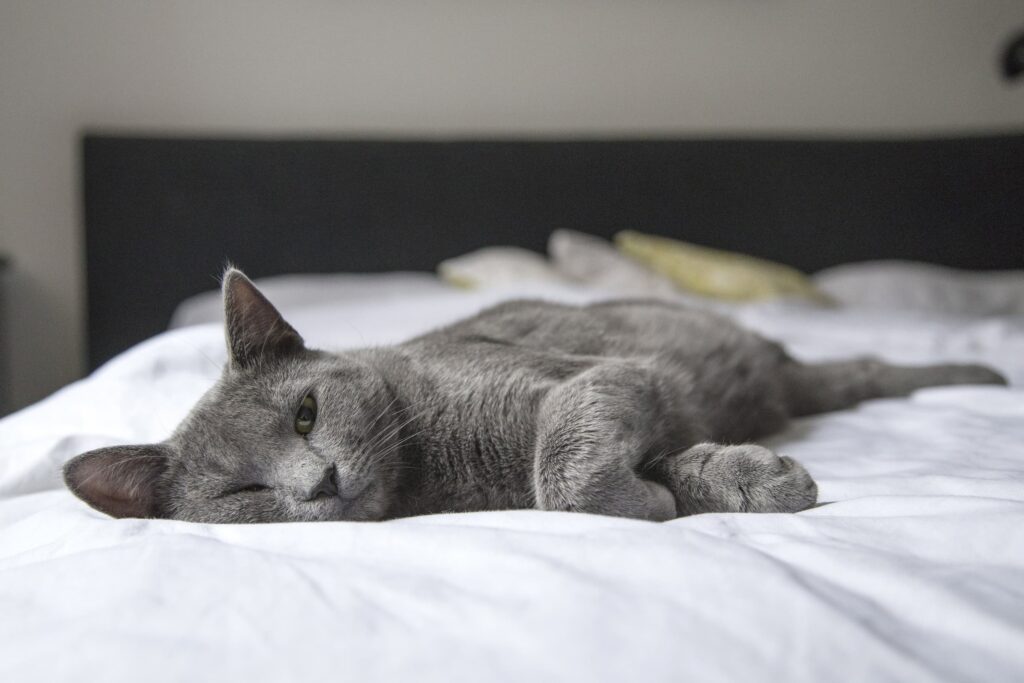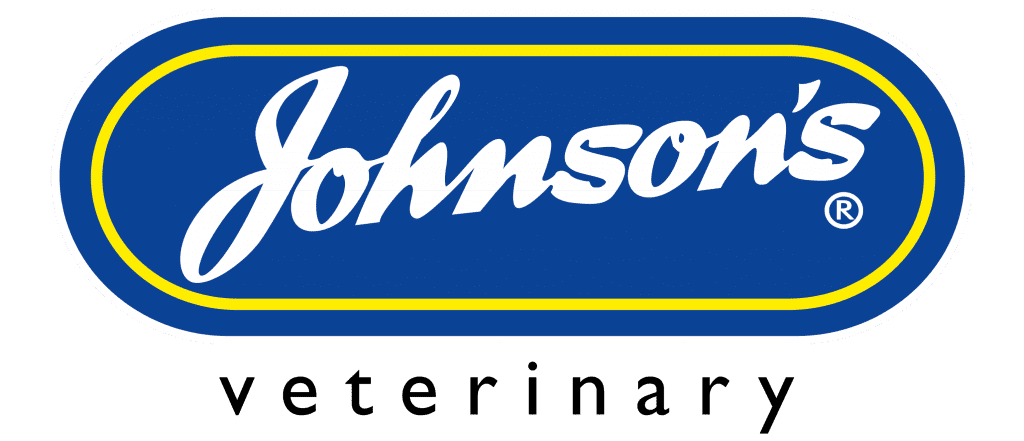Most pet owners will agree that a companion is for life, and watching them grow old happens to be part of the deal. After years of training, nurturing and loving your pet, having to witness the onset of old age can be difficult to see. But what if there were ways to naturally ease the ageing process?
That is what we are here to discuss as we welcome the start of National Senior Pet Month. This means the whole of November is dedicated to older pets and how you can make ageing more comfortable.
Of course, you can’t stop old age from taking place. But with a little care, you can certainly soften the process for your pet. In this blog, we will show you how to predict and recognise the signs of ageing in pets, and how to react in good time.
At what age does a pet become a senior?
It’s always helpful to know when your pet will become a senior so you can plan ahead of schedule, rather than trying to reverse the effects later on.
However, the answer isn’t as straightforward as one number. It very much depends on the breed of your pet, their size, and their lifestyle. For example, a French Bulldog (shortest life span recorded) living in a small flat is likely to age quicker than an Australian Cattle Dog (longest life span recorded) who’s been nurtured in the countryside.
Nevertheless, there are still some rough senior guidelines that will help you prepare for their older years:
- Small dogs – 11-12 years
- Medium dogs – 10 years
- Large dogs – 8 years
- Extra-large dogs – 7 years
Cats on the other hand are considered senior between 11-14 years, with super-senior cats starting from 15 years onwards.
Thanks to better nutrition, healthcare products and veterinary advice, these age classifications are being redefined as more pets outlive the predictions. Our understanding as a pet community has improved hugely, enabling us to care for our animals much more effectively.
Instead of a number deciding the seniority of your pet, you might want to base it on their individual behaviours and abilities. That way, you can react to the ageing on display, rather than what is expected of your pet at that point.

Slowing down
Slowing down is one of the most obvious indicators that age is catching up with your pet. It’s very clear to see when a once sprightly pet starts to become much more passive and sedate in their movements.
Climbing up the stairs may take longer than usual, jumping onto the sofa seems to be a struggle, and their games of fetch are cut five minutes short. A deceleration in such day-to-day activities, even if it’s only slight, is usually a sign that your pet is creeping closer to their mature years. It’s at this point where degenerative diseases and joint aches and pains start to cause problems.
Weaker senses
Your pets’ senses may not be as in tune as they used to as they grow older. For instance, if you find yourself repeating certain demands and names because your pet is ignoring them, it could be because they’re struggling to hear you. When dogs lose their hearing, it’s usually the higher frequency sounds which dissipate first, simultaneously in both ears.
Similarly, if a pet is losing their eyesight, they often become oblivious to their surroundings. Clumsy behaviours that may seem funny and harmless, like tripping over or missing the mark, can represent much bigger problems, such as cataracts or retinal degeneration.
Weight changes
As we already know, activity levels drop when you age. This can have a series of knock-on effects, one of which is weight gain. It’s perfectly normal for your pet to gain a few extra pounds due to reduced movement, but you should also pay close attention to a pet losing weight. Weight loss in later years is not often intentional, so it often boils down to a loss of appetite or poor absorption of nutrients.
Breathing difficulties
Older pets don’t have as healthy lungs as younger pets, and you should monitor their breathing for changes as they mature. We don’t mean panting after a play in the park, but if your pet is gasping for air unnecessarily, then it could be due to chest restrictions or mild fibrosis of their lungs. This would decrease their ability to expand their lungs and exchange oxygen appropriately, suggesting the difficulty to breathe.
A side note – this depends on the breed of your dog. Flat-faced (brachycephalic) breeds, such as Pugs, French Bulldogs or Boxers, already suffer with breathing troubles because their shorter heads struggle to accommodate for the amount of tissue they have. Because of this, they often have narrow nostrils, nasal passages and windpipes, which effects their ability to breath that way (instead of age-related problems).
Dealing with an elder in the house
Encouraging regular, but gentle, exercise is essential for the maintenance of joint health and mobility in older pets. Remember to keep exercise low-intensity and go at your pet’s pace. Exercise that is too strenuous could push them beyond their abilities and cause an injury, which is much harder to recover from as a senior.
If you’re particularly concerned about your pet’s mobility, you could try our 4joints range – a nutritional supplement for the maintenance of flexibility and mobility in joints and to help relieve joint pain and stiffness. Some older pets may also benefit from physiotherapy or hydrotherapy sessions, or tailored veterinary care if they’re slowing down rapidly.

Mental stimulation
Mental and physical stimulation go hand in hand, and it’s just as important to exercise the mind as it is the body. Engaging toys and food puzzles will help with your pet’s cognitive function, as it requires them to use their brain and problem-solving skills. Not only this, it will keep them entertained for hours which has a positive reaction on their wellbeing.
Healthy diet
Your pet’s dietary needs will change as they get older. Depending on the breed, you will have to manage their daily intake to suit their life as a senior. Smaller breeds may require less food as they age, whilst larger breeds might need more to maintain nutrients and metabolism. Whatever your pet’s condition, a well-balanced diet with lots of fibre and age-appropriate food is necessary to minimise weight-related health problems.
Our premium-quality, food-grade natural Salmon Oil, produced from sustainably-sourced North Atlantic Salmon, is a quick and easy way to include Omega-3 and Omega-6 into your pet’s diet. The cold-pressed extraction process delivers the maximum benefits for your pet, such as improved joint mobility, healthy skin and coat and boosted immunity.
Adapt your space
With the potential health and mobility issues that arise with age, making adjustments in your home is one way to make things a little easier for your pet. This doesn’t need to be a huge re-design. Simply providing warm, quiet areas for them to rest and ensuring clear access to food and water is enough to aid their navigation.
If your pet has a younger sibling, and will not be alone in the house, make sure you set up their food and water stations in an area that doesn’t require competition with the more active pet. Chances are they will out-run the senior and leave them with little to no resources.
Additional grooming
Older pets revert to their puppy or kitten-like selves in a way that they heavily rely on their owners all over again. They become less able to carry out everyday tasks, like grooming themselves. This is where you should schedule regular grooming sessions to maintain their coat condition and general hygiene. Taking your dog to the groomers is another alternative if you struggle to find the time to do this yourself.
Age is just a number
After years of ongoing research, the pet community have developed many ways to manage old age if you pre-empt it. Different breeds have continuously proven age estimates wrong, and shown that with a dedicated owner, they can serve as companions much longer than expected.
But there also comes a point in growing old where you must accept that your pet isn’t, and will never be, as agile as they once were. As upsetting as it may be, it should re-centre your focus on filling their last years with lots of love, affection and well-earned rest.





